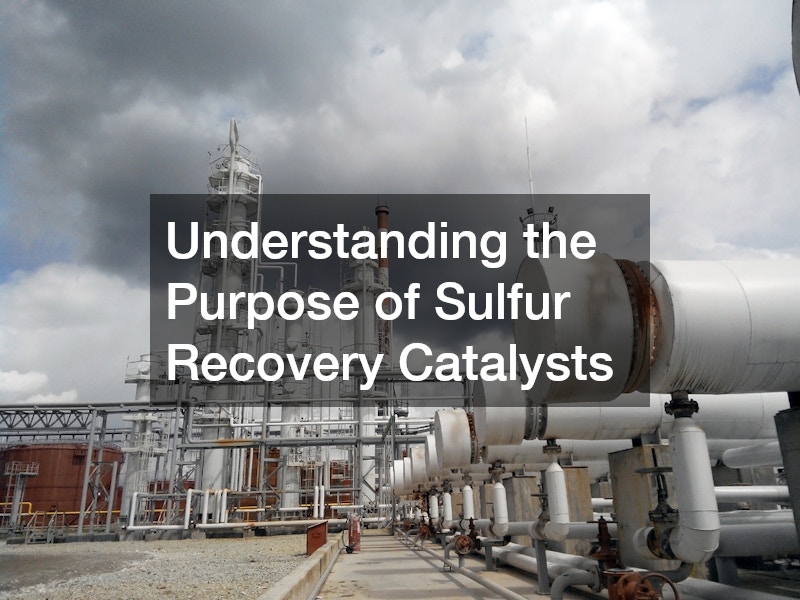Sulfur recovery catalysts play a crucial role in industrial applications, particularly in the petroleum and natural gas sectors. These catalysts are essential for reducing emissions and recovering valuable sulfur compounds. The significance of sulfur recovery catalysts lies not only in environmental protection but also in economic benefits, which make them indispensable.
Industries worldwide rely on these catalysts to meet stringent environmental regulations and optimize production processes. In this article, we will delve into the functions, mechanisms, types, challenges, and future opportunities associated with sulfur recovery catalysts. Our exploration will provide a comprehensive understanding of their relevance and impact across various domains.
What Are Sulfur Recovery Catalysts?
Definition and Basic Functions
Sulfur recovery catalysts are materials that facilitate the conversion of hydrogen sulfide (H2S) into elemental sulfur. This chemical process is vital in industries where H2S is a byproduct, particularly in gas processing and refining operations. The primary function of sulfur recovery catalysts is to enhance the efficiency and effectiveness of the recovery process. By doing so, they help minimize environmental pollution and ensure that valuable sulfur compounds are reclaimed. These catalysts offer a sustainable solution to reduce sulfur emissions, which contribute to acid rain and environmental degradation. Ensuring their optimal performance is crucial for industries committed to environmental responsibility.
Historical Development and Evolution
The development of sulfur recovery catalysts dates back to the early 20th century, driven by the need to mitigate harmful sulfur emissions. Over the decades, advancements in chemical engineering and material science have significantly improved their efficiency and effectiveness. Initially, simple catalysts were used primarily to reduce emissions, but with growing environmental concerns, more sophisticated and efficient catalysts evolved. The evolution has been marked by continuous research and innovation, leading to more versatile and durable catalysts.
How Do Sulfur Recovery Catalysts Work?
Mechanisms of Action
The mechanism of action of sulfur recovery catalysts involves the conversion of H2S to elemental sulfur through a series of chemical reactions. This process is facilitated by the catalyst’s ability to lower the activation energy required for the reactions. Catalysts provide an alternative pathway for the reaction that is both faster and more efficient. They play an essential role in enhancing the conversion rate, ensuring that the maximum amount of sulfur is recovered.
Role in the Claus Process
The Claus process, which is central to sulfur recovery, heavily relies on catalysts to convert H2S into elemental sulfur. In the first stage of this multi-step process, H2S is partially oxidized to form sulfur dioxide (SO2). Subsequently, in the catalytic reactor stages, the remaining H2S reacts with SO2 in the presence of sulfur recovery catalysts to produce elemental sulfur and water. This step is where catalysts exhibit their critical role by facilitating the reaction at a lower temperature.
Why Is Sulfur Recovery Important?
Environmental Impact
Sulfur recovery significantly reduces the release of hydrogen sulfide, a toxic and corrosive gas, into the atmosphere. By doing so, it helps in minimizing acid rain and protecting ecosystems from sulfur-induced damage. The environmental benefits of sulfur recovery are substantial, as it promotes cleaner air and prevents soil and water acidification. This commitment to reducing emissions aligns with global efforts to combat climate change and biodiversity loss.
Economic Advantages
Beyond environmental benefits, sulfur recovery processes provide significant economic advantages by converting waste into valuable products. The recovered sulfur is often sold and used in various industries, including agriculture, chemicals, and manufacturing. By optimizing sulfur recovery, industries can achieve cost savings through reduced waste disposal and the sale of byproducts. The process adds economic value to operations that otherwise might incur additional environmental compliance costs.
What Types of Sulfur Recovery Catalysts Are Available?
Categorization of Catalysts
Sulfur recovery catalysts are broadly categorized based on their material composition and application within the recovery process stages. Common types include alumina-based, titania-based, and zeolite catalysts. Each type of catalyst offers distinct advantages and functionalities that suit specific stages of the Claus process. For instance, alumina-based catalysts are known for their high stability and durability under harsh conditions.
Recent Innovations and Developments
Recent years have witnessed significant advancements in sulfur recovery catalyst technology, driven by a demand for higher efficiency and sustainability. Innovations include catalysts with enhanced surface areas and improved reaction kinetics. Nanotechnology has played a pivotal role, leading to the development of catalysts with superior dispersion and activity. These advances contribute to higher sulfur recovery rates and lower energy consumption.
What Are the Challenges and Opportunities in Sulfur Recovery?
Technical and Operational Challenges
One of the primary technical challenges in sulfur recovery is maintaining catalyst performance over long operation periods. Deactivation due to poisoning and fouling can significantly reduce catalyst life and efficiency. Operationally, optimizing the conditions under which the catalysts operate is crucial for maximizing recovery. This includes controlling temperature, pressure, and feed composition, which often presents logistical and financial hurdles.
Future Opportunities and Trends
As environmental regulations become more stringent, the demand for efficient and sustainable sulfur recovery solutions is likely to increase. This presents significant growth opportunities for advancements in catalyst technology. Future trends indicate a shift towards more environmentally benign and economically viable catalysts. Developments in biomimetic and green chemistry principles may offer new directions for sulfur recovery processes.
.





